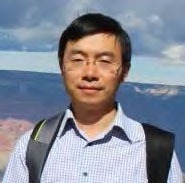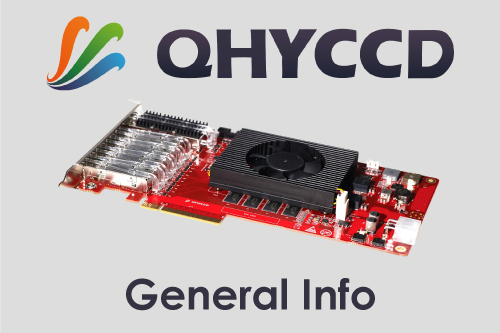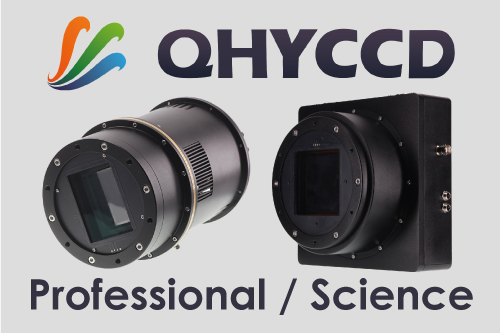QHYCCD Cameras – Discover New Horizons
A short Company histroy of QHY

Dr. Qiu Hongyun, Read more about the QHY history and Dr. Hongyun
QHYCCD Light Speed Vision Co. Ltd QHYCCD Light Speed Vision (Beijing) Co., Ltd., founded by Qiu Hongyun, Ph.D., designs and manufactures world-leading astronomical cameras, ranging from entry-level to professional, CMOS and CCD, front-illuminated and back-illuminated, specially crafted for amateur and professional astronomers worldwide.
The QHY product line includes over 40 different models and configurations including scientific cameras. Most of the company’s products are exported to the United States and Europe.
The rich QHY product line is renowned for excellent performance and reliable quality. The sensor arrays used in QHY cameras range from 400,000 pixels to more than 50 megapixels. Sensor format sizes range from 1/4 inch to medium format photography size (61mm diagonal), all with complete independent intellectual property rights.
The QHY line of products include
- thermoelectrically cooled cameras,
- high- resolution scientific grade cameras,
- astronomical imaging cameras,
- digital X-ray machine DR cameras, UV photography, infrared photography and medical applications
- and solar, industrial and laboratory
The extraordinarily low noise and high sensitivity of QHY CMOS cameras has made them the camera of choice for planetary imaging where stacking and processing numerous frames tremendously improves the image. Moreover, the same low noise cameras facilitate taking and combining shorter exposures of deep space objects to achieve similar results as a single long exposure. This makes it much easier to control guiding corrections and focus in each individual sub-frame and to discard a bad frame when necessary without losing an entire night's work.
As many amateur astronomers can testify, in the case of QHYCCD, affordable does not mean lower quality. QHY cameras have been used by amateurs for nearly 15 years with satisfaction and success. The first
observatory established in China by and for amateurs is Xingming Observatory. Set up and managed by amateur Gao Xing, the observatory is housed at the Nanshan Station of Xinjiang Astronomical Observatory affiliated to the Chinese Academy of Sciences. There are about 280 observable nights per year, with median atmospheric seeing around 1.4". Established in 2007, the observatory offers online access to several telescopes and cameras and is currently conducting several scientific surveys including the NSP (nova search plan), CSP (the comet search plan) and SASP (supernovae and asteroids search plan) and various specialized sub-projects. Observations are carried out almost every clear night. In 2010, a half-meter telescope equipped with a QHY9 camera began running the SASP (Supernova and Asteroid Search Plan). This has since been upgraded with a QHY16 camera. Within a few years, the program has found dozens of supernovae and nearly a hundred asteroids.
Whether you are a professional astronomer or an amateur, whether you are doing research or taking aesthetic images, whether you have a blank check from a well endowed foundation or are on a retiree's budget, QHYCCD has a solution that will help you.
QHY 600 M/C Cooled BSI Camera: The new QHY600 is about to change all of this

QHY600 is a 60mega pixel full frame monochrome color CMOS camera. View details
Unlike some companies that primarily offer one type of camera, either CCD or CMOS, QHYCCD has expertise in development of both types, large and small. The new QHY600 camera ist complete.
With the advantage of low readout noise and high-speed readout, CMOS technology has revolutionized astronomical imaging. A monochrome, back-illuminated, high-sensitivity, astronomical imaging camera is the ideal choice for astro-imagers.
However, for years we have only seen the 4/3-inch, front-illuminated, monochrome cameras (QHY163M) with QE of about 60%, and one-inch, back-illuminated, monochrome cameras (QHY183M) with higher QE. Although these sensors are quite good and very suitable for beginners, they are still smaller than the full frame (35mm format) sensors desired for more serious deep sky astrophotography. Also, both of these sensors have 12-bit A/D. To achieve 1e- of read noise you must increase the gain and lose some dynamic range in the process, or you use low gain and lose some precision in sampling and greyscale levels.
The new QHY600 is about to change all of this. The QHY600 uses the latest SONY back-illuminated sensor, the IMX455, a full frame (35mm format) sensor with 3.76um pixels and native 16-bit A/D. This sensor is available in both monochrome and color versions. The QHY600 ends the days of non-16bit CMOS cameras and it ends the days non-full frame (and larger) monochrome CMOS cameras.






























